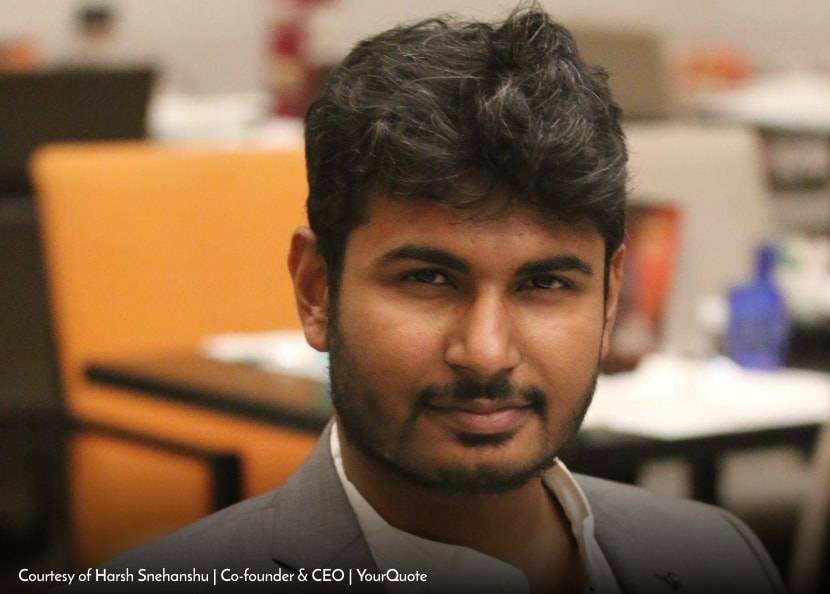Truths of Scale: The Quality Versus Quantity Debate in Community Building
Top 10 Beyond Quality and Management

When we started YourQuote, we invited 40–50 of the best writers from our network and kept the app invite-only. The idea was to limit the influx of mediocre writers and build a community that was quality-driven more than quantity. It, however, stalled our growth and increased our churn and even the good writers who were there on the app couldn’t see the network effect kicking in because of limited number of writers. (Network effect implies organic social interactions taking place between users within a digital product. Needs a critical mass of users to kick in.)
Unclear Initial Vision
When we started out, we were confused ourselves as to whether make YourQuote the Dribbble for Writers (Dribbble is a niche invite-only networking platform for designers) or the Instagram for Writers (Instagram is an open mass-market photo-app). Two months of trials and errors later, we realized a fundamental mistake in our invite-only approach. By being exclusive, we were limiting the virality of our inherently viral idea. In Chamath Palihapitiya’s words, we failed to make 90% of our users say “wow” within 1 minute of their joining. The invite-only barrier was huge. The uninvited users had to fill a form, wait for 6 hours and we would send them a code, with which they would login. Half of them would run away at the sheer sight of the form.
The most surprising facet of this invite-only experiment was that even after following those steps, we found some of the writers posting plagiarized, spam and mediocre fluff on our app. Our expectation that the quality would be out of this world because of being invite-only was sadly unfulfilled. However, a few writers did write content that was spellbinding. As a platform, we didn’t want to moderate content before the user posted and expected the community to weed out lame shit, but the community was more docile at that time. The problem with writing is its subjectivity and even a brilliant writer might not be be able to pull off brilliance all the time. There will be some ordinary stuff scribbled from their pen.
After much deliberation for 2 months, we removed the invite-only feature and made the app open for all. Anyone could login and post their writings without a second thought. Just like Instagram. It skyrocketed our growth. Although initially it pulled down our overall quality, soon the network effects kicked in and writers started advising each other on grammar, punctuation and sentence structuring to make each other’s writings flawless. Currently, social interactions have reached an all time high. Facebook & Whatsapp groups have been formed with a truly family feel. A culture that values original content has been created.
The Refined Vision
We now realize that the more ambitious and disruptive aim for us will be to become the Instagram for writers, not Dribbble as there is a huge vacant space when it comes to an addictive mobile writing app and our idea and branding suits the mass use case with the mass market. We haven’t constrained our users to any one form of writing and the word “quote” is a goldmine. For YourQuote, we are not thinking in terms of a million users or tens of million, but rather 500 million users who like to read and write. It’s better to target a large market of over 50,000,000 amateur writers rather than 50,000 professional ones, providing them with both opportunity to become better and get published. Publishers become exclusive, not platforms.
What About The Elites?
During the process, to uplift the quality, we invited a lot of famous writers, even some professional ones to try out our platform. Some of them were too elitist to respond. Some joined, saw some mediocre fluff and ran off. This worried us initially, but now it does not. It is but natural.
Being a published novelist myself, I am a closet elitist. I would have pretty much done the same on an app with 1k, 5k or 10k downloads. I would have taken it seriously only if there were 100k, 1 million or better still 10 million downloads, a number that is bigger than my social media reach of 30k odd users. This would have been stupid of me because the more the number of people on the app, the more difficult it would get for me to become discoverable and attain followers. However, we elitists are stupid and cynical. What if the company shuts down? You never know.
During our experiments, we realized that great content creators thrive on appreciation and marketability of their content. Even though Vimeo has niche and quality content-creators, majority of the prolific ones are on YouTube because that’s where the audience—both brilliant and mediocre—is. Including even the best of content creators. Be it John Oliver or TVF. Because it’s easier for quality content creators to build their following, they wait for the network to become bigger and more marketable being joining them. Psychologically it seems convincing for them.
At YourQuote, we have come to a difficult decision (despite our closet elitist outlook): to create a product of scale, we need to focus on quantity over quality. Once the quantity comes in, automatically high quality writers will join. It becomes a marketing avenue for them. Being Instagram-like, it doesn’t really concern us because mediocre writers won’t garner as many followers and would be difficult to find. True, we will lose out on some great writers who use blogs or Facebook to broadcast their writings right now, but we are looking not at 10000 or 100,000 writers writing on our app, but the 500 million people from across the globe. When you see that scale, you realize that phenomenally brilliant writers are statistically insignificant (less than 50,000) in number and they can be tempted later.
Instagram Case Study
A similar thing happened with Instagram when it launched. Because Instagram turned a lot of amateurs think of themselves as photographers, it pissed a lot of professional photographers off for a long time initially. They preferred posting their pictures on clunkier web-products like Flickr or Eyefetch. However, the growth of Instagram created a rare FOMO (fear of missing out) especially when they already had a stunning portfolio ready and gettyimages and stockphotos started shortlisting and licensing pictures posted by Instagram’s users. It would have been a loss for them if they didn’t. Once they did, the sheer social marketing aspect hooked them in.
The bottomline quite simply is: if they don’t come for writing, they will come for marketing their writing.
This article was originally published on Medium and has been republished with the author’s permission.



















